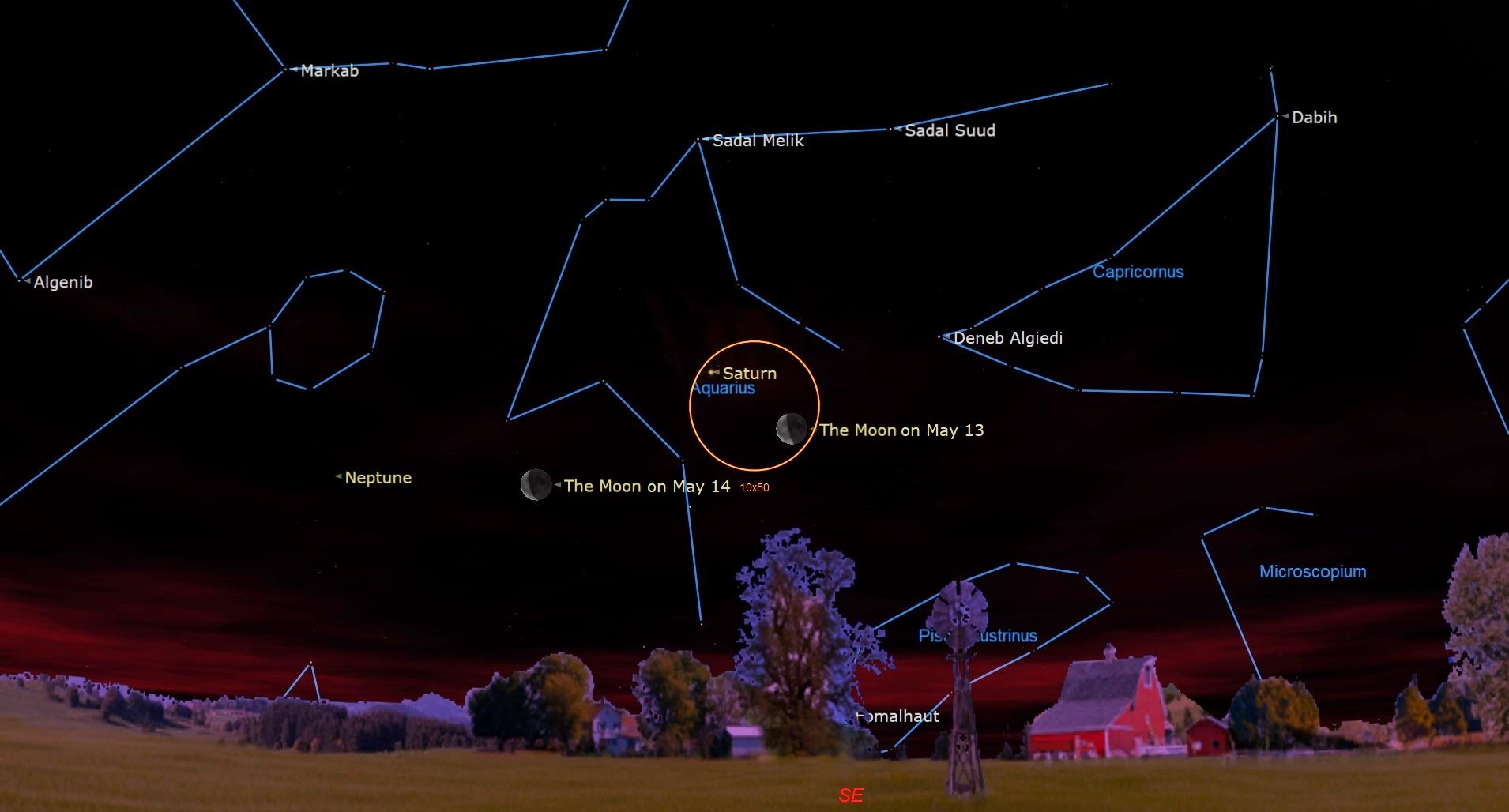Witness the Conjunction of the Moon and Saturn in the Sky on Saturday, May 13
Key Highlights :

On Saturday, May 13, the moon and Saturn will make a close approach in the sky over Earth. The two celestial bodies will also share the same right ascension, an arrangement astronomers call a conjunction. This close approach and conjunction of the half-illuminated moon, which is just coming out of its third quarter moon phase, and the second largest planet in the solar system will be visible in the sky from the early morning until just after midday.
From New York City, the conjunction will appear in the southern skies soon after the moon and Saturn rise at 2:39 a.m. EDT (0639 GMT) until just after they set at around 1:30 p.m. EDT (1730 GMT). The 23-day-old moon will pass within around 2°59' of Saturn with both celestial bodies located in the constellation of Aquarius, according to In the Sky.
The moon will have a magnitude of -11.7, with the minus prefix indicating a particularly bright object in the sky, while Saturn will have a magnitude of 0.8, making it somewhat more difficult to view. Despite making a close approach at around the same time as the conjunction, In the Sky reports that the moon and Saturn will still be too widely separated to fit in the field view of a telescope. The two bodies could be easily viewed together in the wider field of view of a pair of binoculars, however.
During the close encounter, both objects will have right ascensions of 22h32m50s. Meanwhile, the moon will have a declination of -13°59' while Saturn will have a declination of -10°42' during the conjunction.
This proximity to Earth means that while the moon will have an angular size of around 32'11"8 during the conjunction, Saturn, despite being much larger, will have an angular size of just 16"6. To get a picture of just how much larger Saturn is than the moon, picture this: It would take 9 Earths to ring the equator of the gas giant, while it would take 36 moons to make a belt for Saturn. These size differences become even more intimidating when considering volume; it would take over 700 Earths to fill the volume of Saturn, while it would take 50 moons to fill the volume of the Earth. That means it would take at least 35,000 moons to fill the volume of the gas giant.
If you are hoping to catch a look at the moon or Saturn during this lunar conjunction, our guides to the best telescopes are a great place to start. Skywatchers who want to see the two celestial bodies together during the close approach could instead turn to Space.com’s guide to the best binoculars for the job.
If you're looking to snap photos of the night sky in general, check out our guide on how to photograph the moon, as well as our best cameras for astrophotography and best lenses for astrophotography.
The conjunction and close approach of the moon and Saturn will be a spectacle to behold, so don't miss out on this once in a lifetime opportunity. Get your best telescope or binoculars ready and witness the beauty of the night sky!
Title: Don't Miss the Conjunction of the Moon and Saturn in the Sky on Saturday, May 13
